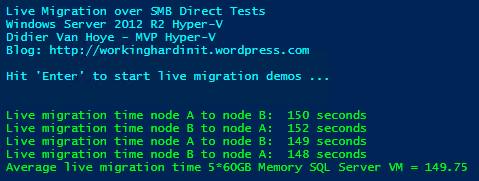If you think that a hybrid cloud means you need to deploy SCVMM & WAP you’re wrong. It does mean that you need to make sure that you give yourself the best possible conditions to make your cloud a success and an asset in the biggest possible number of all scenarios that might apply or come up.
Cool you say, I hear you, but what does that mean in real life? Well it means you should stop playing games and get serious. Which translates into the following.
Connectivity
A 200Mbps is the absolute minimum for the SMB market. You need at least that for Office 365 Suite, if you want happy customers that is. Scale based on the number of users and usage but remember you’ll pinch at least a 100Mbps of that for a VPN to Azure.
Get a VPN already!
Or better still, take the gloves off and go for Express Route. Extend your business network to your cloud and be done with all the hacks, workarounds, limitations, tedious & creative yet finicky "solutions" to get thing done. I guess it beats living with the limitations but it will only get you that far.
Any country or business that isn’t investing in FC to the home & cheap affordable data connectivity to the businesses is actively destroying long term opportunity for some dubious short term gain.
So without further ado, life is to short to do hybrid cloud without. It opens up great scenarios that will allow you to get all the comforts of on premise in your Azure data center such as …
Extend AD & ADFS into Azure
Get that AD & ADFS into the cloud people! What? Yes, do it. That’s what that good solid VPN between Azure and on premises or better still, Express Route enables. Just turn it into just another site of your business. But one with some fascinating capabilities. DirSync or better Azure Active Directory Sync will only get you that far and mostly in a SAAS(PAAS) ecosystem. Once you’ve done that the world is your oyster!
Conclusion
So don’t be afraid. Just do it! People I have my home lab and it’s AD connected to my azure cloud via VPN! That’s me the guy that works for his money and pays his own bills. So what are you as a business waiting for?
But wait Didier, isn’t AD going away, why would I not wait for the cloud to be 100% perfect for all I do? Well, just get started today and take it from there. You’ll enjoy the journey if you do it smart and right!
“Your cloud, your terms”. Well that’s true. But that’s not a given, you’ll need to put in some effort. You have to determine what your terms are and what your cloud should look like. If you don’t you’ll end up in a bad state. If you have good IT staff, you should be OK. If they could handle your development environment & run your data center chances are good they’ll be able to handle “cloud”. Really.
Consultants? Sure, but get really good ones or you’ll get sold to. There’s a lot of churning and selling going on. Don’t get taken for a ride. I know a bunch of really good ones. How do I determine this? One rule … would I hire them ![]()







